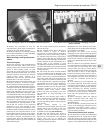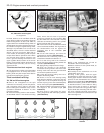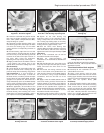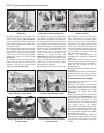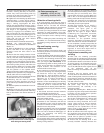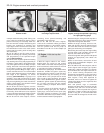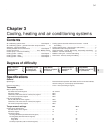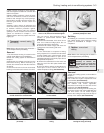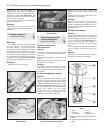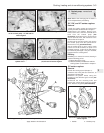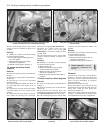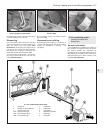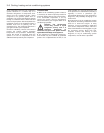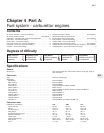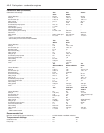
coolant mixtures are likely to cause damage,
and encourage the formation of corrosion and
scale in the system.
3 Before adding antifreeze, check all hoses
and hose connections, because antifreeze
tends to leak through very small openings.
Engines don’t normally consume coolant, so if
the level goes down, find the cause and
correct it.
4 Ideally, a 50% mixture of antifreeze and
clean soft water (by volume) should be used
to maintain maximum protection against
freezing and corrosion. Mix the required
quantity in a clean container and then fill the
system as described in Chapter 1, and
“Weekly checks”. Save any surplus mixture for
topping-up.
4 Thermostat - removal, testing
and refitting
2
Note: Refer to the warnings given in Section 1
of this Chapter before proceeding.
Removal
1 The thermostat housing is located on the
cylinder head adjacent to the distributor.
2 Drain the cooling system as described in
Chapter 1.
3 Disconnect the radiator top hose from the
thermostat housing. Where necessary for
access, also remove the air inlet duct from the
air cleaner.
4 Unscrew and remove the two thermostat
housing cover bolts and remove the cover.
This may need a little persuasion with a
wooden or plastic-faced hammer (see
illustration).
5 Remove the thermostat. If it is stuck, do not
lever it out under its bridge piece, but cut
around its edge with a sharp knife.
6 Remove the rubber ring(s) and clean the
mating faces of the housing and cover.
Testing
7 If the thermostat is suspected of being
faulty, suspend it in a container of water which
is being heated. Using a thermometer, check
that the thermostat starts to open at the
specified temperature and is fully open also at
the specified temperature.
8 Remove the thermostat from the water and
allow it to cool. The valve plate should close
smoothly.
9 If the unit fails to operate as described or is
stuck open or shut, renew it with one of
similar temperature rating (see illustration).
Refitting
10 Refitting is a reversal of removal but use
new rubber sealing ring(s). Refill the cooling
system as described in Chapter 1 on
completion.
5 Radiator - removal and
refitting
2
Note: Refer to the warnings given in Section 1
of this Chapter before proceeding.
Removal
1 Drain the cooling system, as described in
Chapter 1.
2 Remove the front grille (see Chapter 11)
then unbolt the engine compartment front
crossmember (see illustration).
3 Disconnect the top and bottom hoses from
the radiator and, where applicable,
disconnect and unclip the vent hose for the
expansion tank (see illustration).
4 Disconnect the wiring from the cooling fan,
the thermo-switch and, where applicable, the
low level sensor. On TU series engines,
remove the cooling fan relay from the clip on
the top of the radiator (see illustrations).
Cooling, heating and air conditioning systems 3•3
3
4.9 Thermostat temperature rating
(arrowed) stamped on base
4.4 Removing the thermostat housing
cover on XV, XW and XY series engines
5.3 Expansion tank vent hose connection
on the radiator
5.2 Undo the bolts (arrowed) on each side
and lift off the front crossmember
5.4a Disconnect the thermo-switch
(arrowed) . . .
5.4b . . . and low coolant level sensor
wiring
5.4c On TU series engines, remove the
cooling fan relay (arrowed)
If leakage is the reason for
wanting to remove the
radiator, bear in mind that
minor leaks can often be
cured using a radiator sealant with the
radiator in situ.



